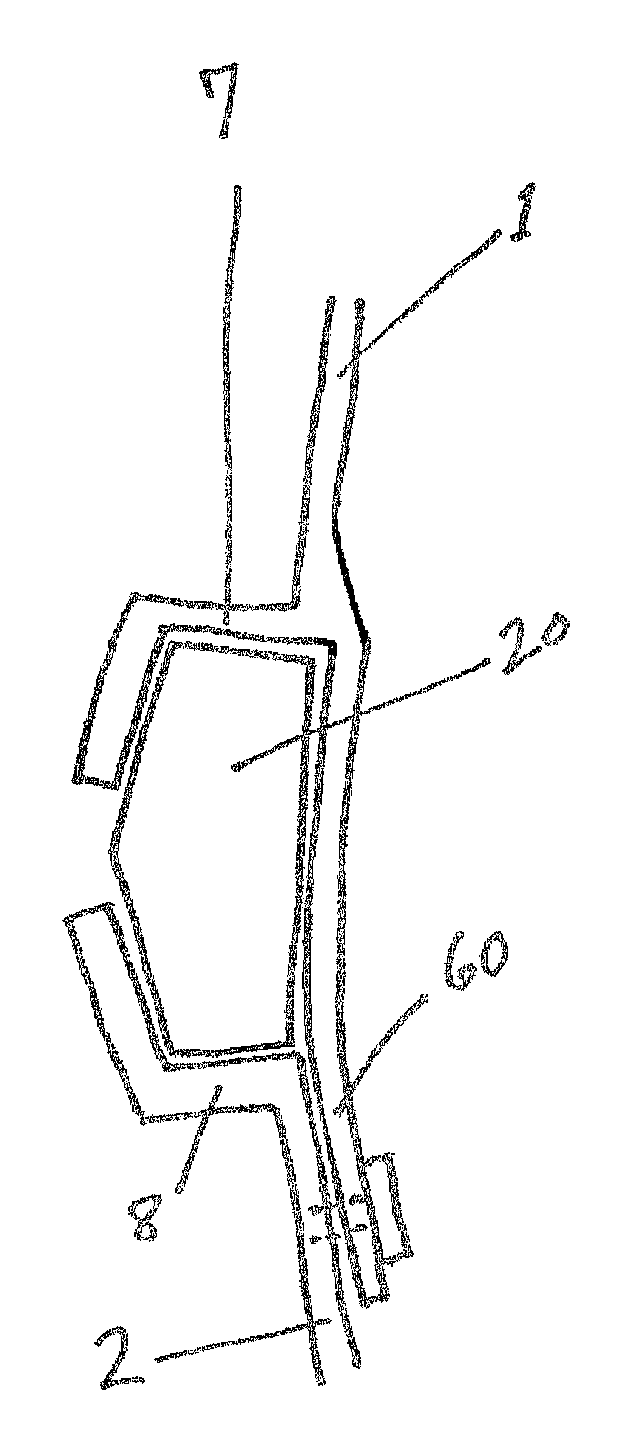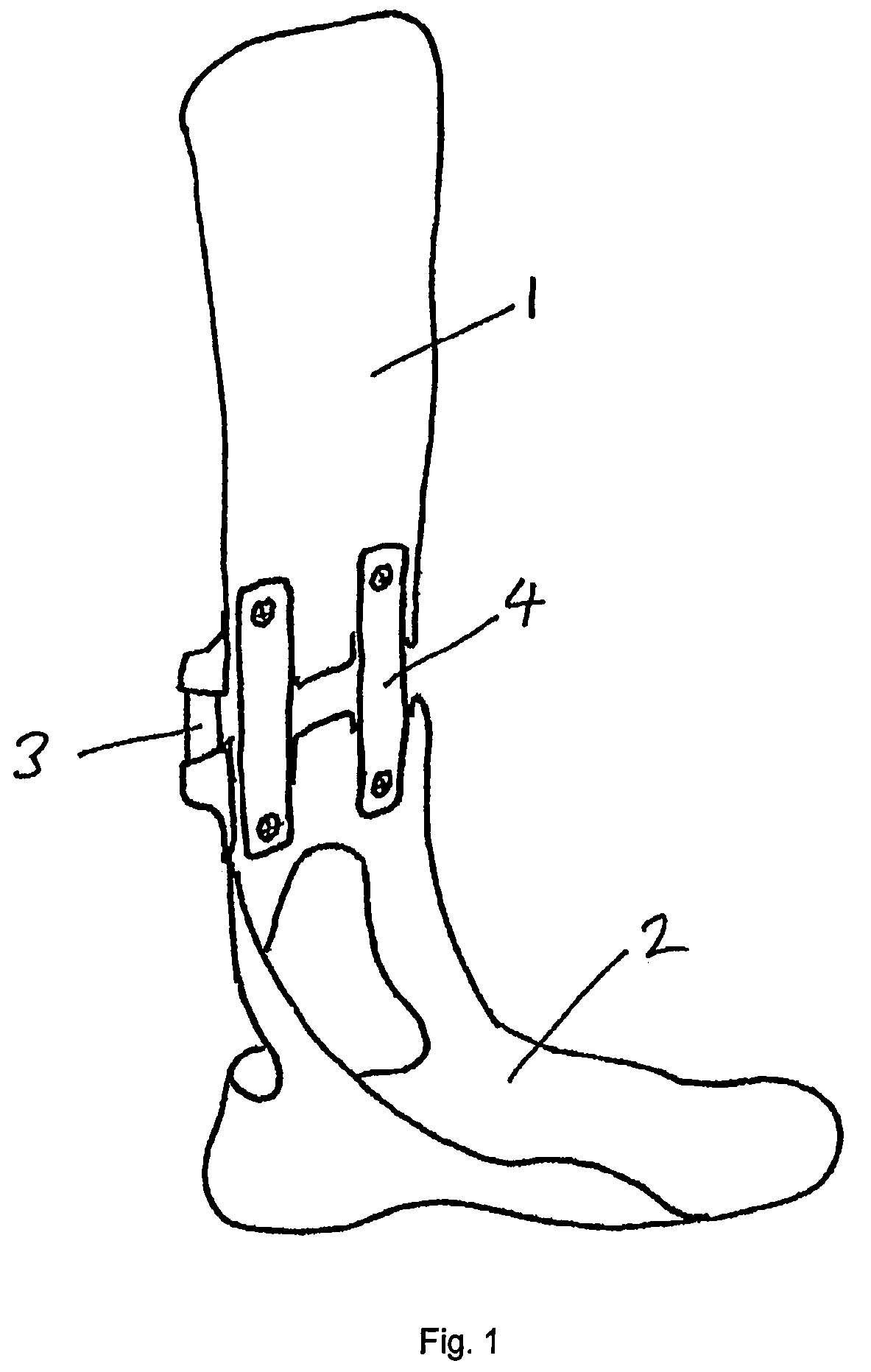Articulated orthosis providing lift support
a technology of orthosis and support, applied in the field of orthosis, can solve the problems of loss of function of the foot and ankle, loss of ability to bring the foot up, biomechanical deficit, etc., and achieve the effect of higher modulus of elasticity
- Summary
- Abstract
- Description
- Claims
- Application Information
AI Technical Summary
Benefits of technology
Problems solved by technology
Method used
Image
Examples
Embodiment Construction
[0039]Different aspects of the invention are described in terms of an AFO, which is the preferred embodiment, however it will be clear to the skilled in the art that the invention extends to other orthosis requiring adjustability in pre-loading and moment. Some preferred embodiments are described below.
[0040]FIG. 1 is a general depiction of an ankle foot brace. A calf section 1 is articulated to a foot section 2 through two joints 3 and 4 respectively. While a single joint brace is also useful, the preferred embodiment calls for utilizing two joints.
[0041]FIG. 2 depicts a cross section of the preferred embodiment of the invention in an unloaded state. The calf portion 1 and the foot portion 2 of the brace, each have a compression surface 7 and 8 respectively. A tensor 60 is coupled to the calf portion and to the foot portion and holds the portions together. In the preferred embodiment the tensor is coupled using fasteners, such as screws, rivets and the like. The tensor is made of r...
PUM
 Login to View More
Login to View More Abstract
Description
Claims
Application Information
 Login to View More
Login to View More - R&D
- Intellectual Property
- Life Sciences
- Materials
- Tech Scout
- Unparalleled Data Quality
- Higher Quality Content
- 60% Fewer Hallucinations
Browse by: Latest US Patents, China's latest patents, Technical Efficacy Thesaurus, Application Domain, Technology Topic, Popular Technical Reports.
© 2025 PatSnap. All rights reserved.Legal|Privacy policy|Modern Slavery Act Transparency Statement|Sitemap|About US| Contact US: help@patsnap.com



